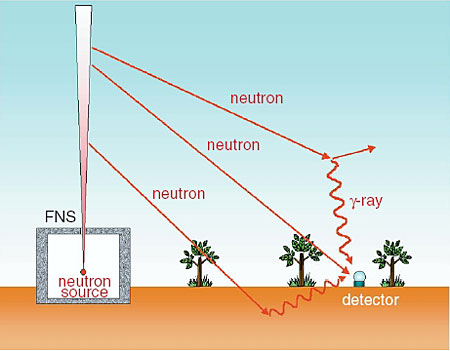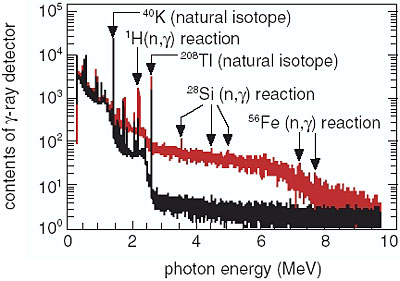Because a fusion reactor needs a large span for the reactor hall, the roof must be thinner than the vertical walls due to architectonic limitations. For the radiation safety of fusion reactors, the radioactive gas from the stack is the most important contributor to the total dose for the nearby public. Next to the radioactive gas from the stack, skyshine, the scattered neutrons and secondary gamma-rays generated by neutrons exiting the reactor hall roof, is the most important external exposure source from fusion reactors.
To understand the propagation process of neutrons in the air and the secondary gamma-ray production process, D-T neutron skyshine experiments were performed at the Fusion Neutronics Source (FNS) of JAERI by emitting D-T neutrons to the sky via a 1 m × 1 m port in the roof with a thickness of 1 m, as shown in Fig. 2-25. The neutron dose rates were measured as far as about 550 m away from the D-T target point with an integration type spherical rem-counter. Secondary gamma-rays were measured with high-purity Ge detectors and a large NaI scintillation detector. Those experimental results were analyzed by the Monte Carlo code MCNP-4B with the nuclear data library JENDL-3.2. As shown in Fig. 2-26, the MCNP calculation can estimate the skyshine dose with sufficient accuracy.
Line spectra from 56Fe(n, gamma) and 28Si(n, gamma) reactions were observed in the secondary gamma-ray spectra shown in Fig. 2-27. Line spectra from the 1H(n, gamma) reaction were excluded. Previously it was considered that the secondary gamma-rays were generated by the scattering of fast neutrons by air; however, this result suggests that the secondary gamma-rays are generated by the absorption of the slowed down neutrons by buildings and the earth.
|


